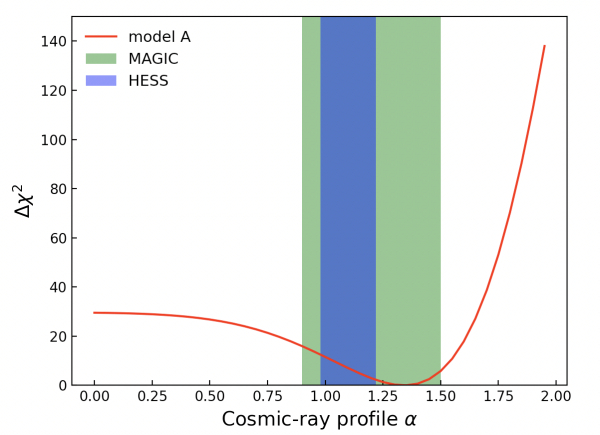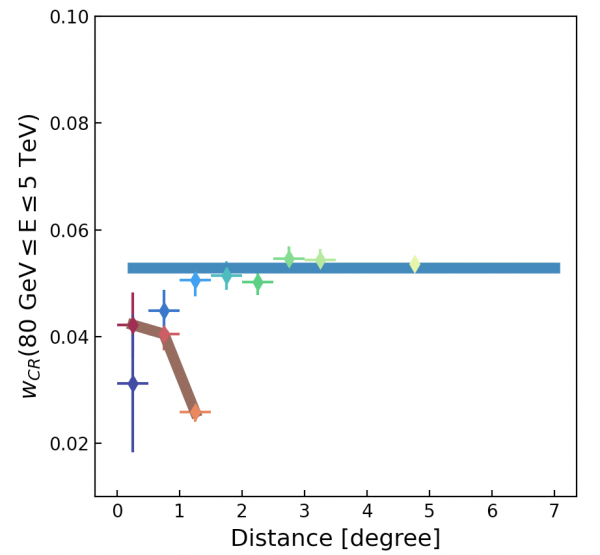Researchers Identify a New Particle Component and a Barrier Near the Galactic Center
A collaborated team from Purple Mountain Observatory (PMO) of the Chinese Academy of Sciences (CAS) recently analyzed the gamma-ray from the galactic center region with the observations of the Fermi-LAT. This work has been published in Nature Communications.
In their study, the low-energy counterpart of the fresh cosmic-ray component discovered by H.E.S.S. is detected, with the consistent spectrum and the consistent spatial distribution (Fig. 1). This supports the presence of a high-energy particle accelerator at the galactic center.


Fig. 1 The gamma-ray spectrum produced by the fresh cosmic-ray component colliding with molecular gas (top), and the spatial profile parameter inferred at very-high-energy and from the Fermi-LAT data (bottom). (Image by HUANG Xiaoyuan)
It is also found that the inferred energy density of cosmic rays in the central molecular zone, which is close to the galactic center, is lower than the cosmic ray sea component (Fig. 2), which contradicts the usual picture that the fresh cosmic-ray is overlaid on the cosmic-ray sea. It is proposed that this demonstrates the existence of a barrier, which can prevent penetration of particles from the cosmic-ray sea into the central molecular zone.

Fig. 2 The cosmic-ray density in the central molecular zone (brown line) and the density outside the central molecular zone (blue line, the cosmic ray sea). (Image by HUANG Xiaoyuan)
This work is supported by the National Natural Science Foundation of China, the Key Research Program of the Chinese Academy of Sciences, and the Program for Innovative Talents and Entrepreneur in Jiangsu.